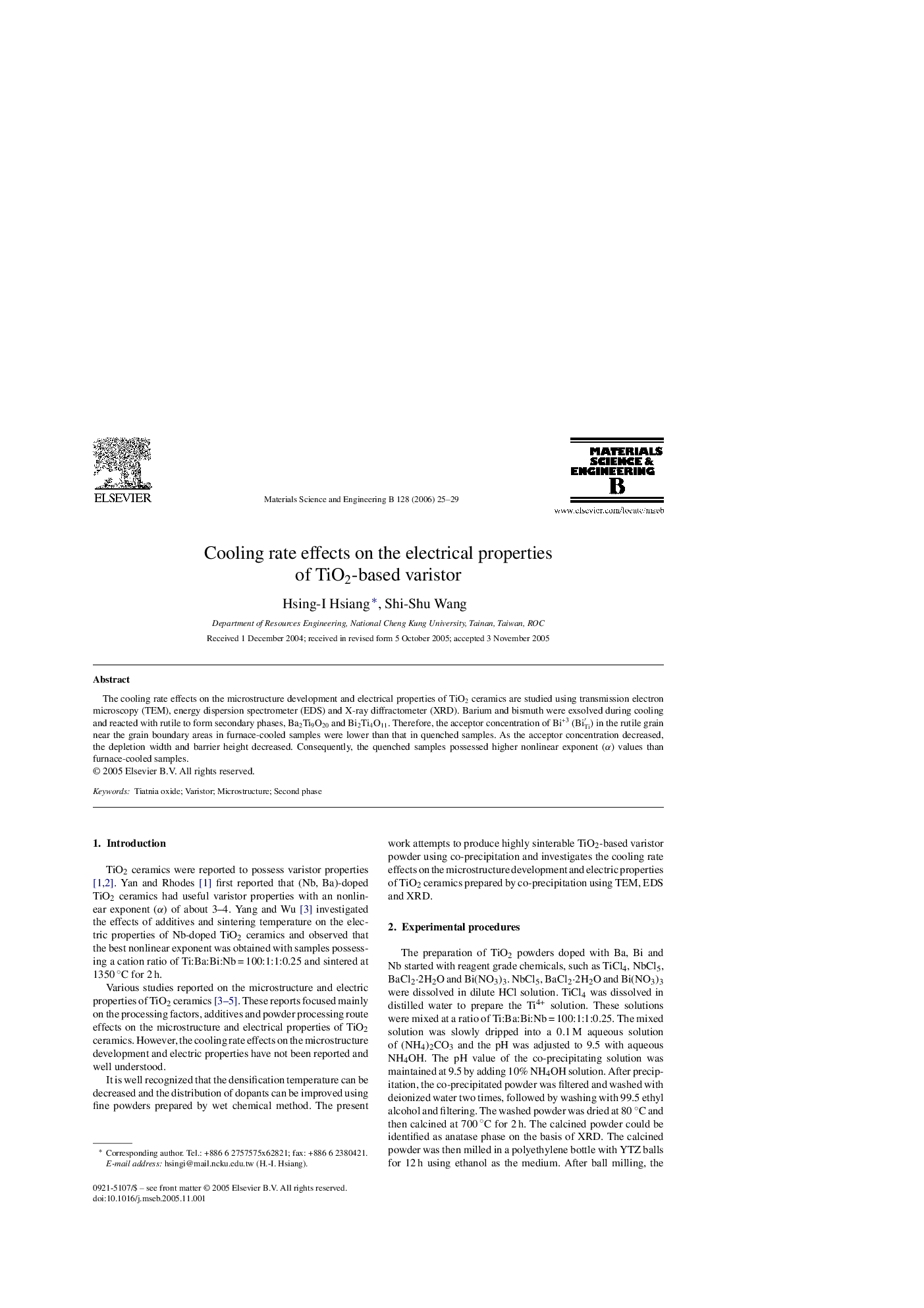| Article ID | Journal | Published Year | Pages | File Type |
|---|---|---|---|---|
| 1532220 | Materials Science and Engineering: B | 2006 | 5 Pages |
Abstract
The cooling rate effects on the microstructure development and electrical properties of TiO2 ceramics are studied using transmission electron microscopy (TEM), energy dispersion spectrometer (EDS) and X-ray diffractometer (XRD). Barium and bismuth were exsolved during cooling and reacted with rutile to form secondary phases, Ba2Ti9O20 and Bi2Ti4O11. Therefore, the acceptor concentration of Bi+3 (BiTiâ²) in the rutile grain near the grain boundary areas in furnace-cooled samples were lower than that in quenched samples. As the acceptor concentration decreased, the depletion width and barrier height decreased. Consequently, the quenched samples possessed higher nonlinear exponent (α) values than furnace-cooled samples.
Keywords
Related Topics
Physical Sciences and Engineering
Materials Science
Electronic, Optical and Magnetic Materials
Authors
Hsing-I Hsiang, Shi-Shu Wang,
